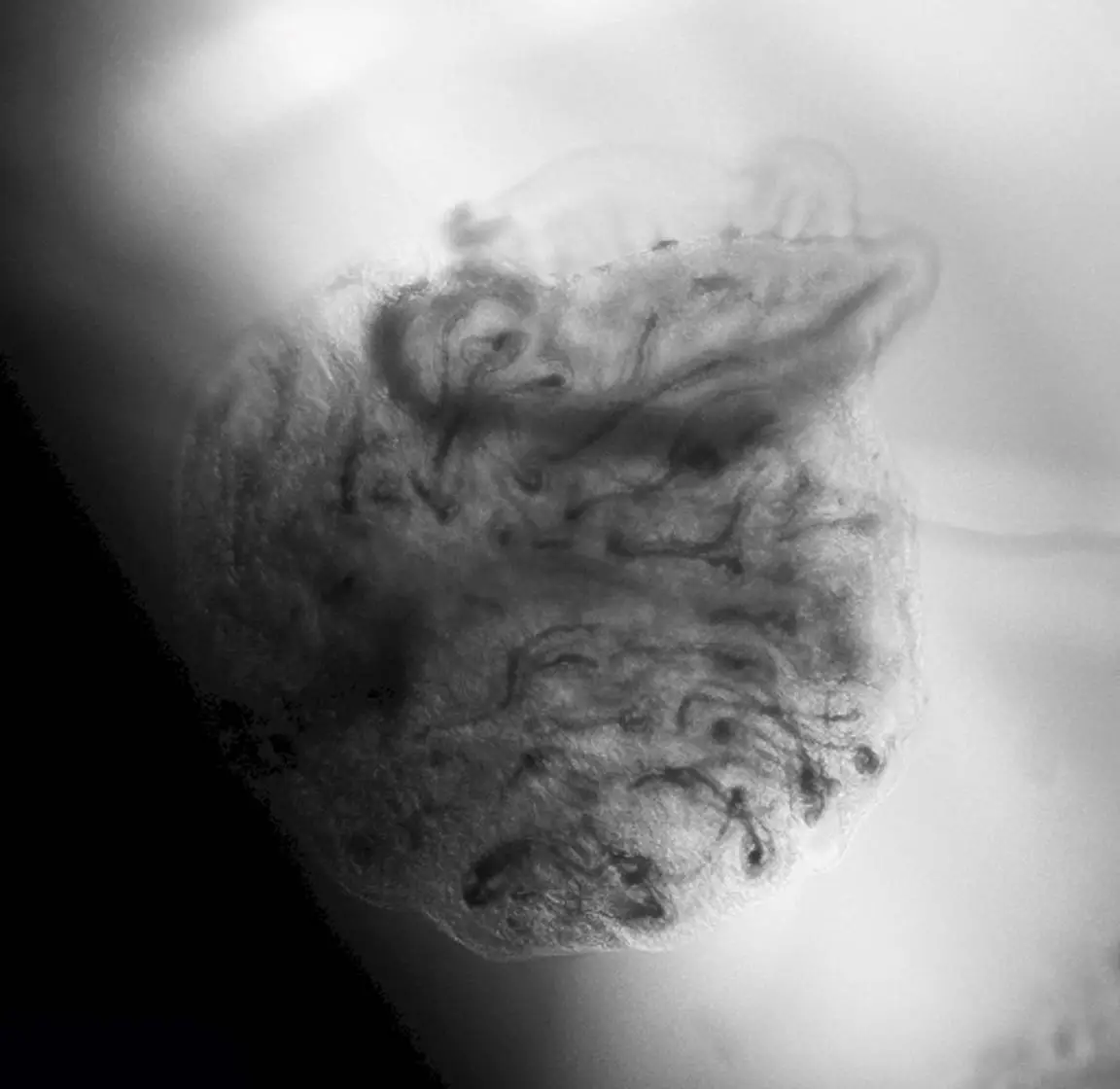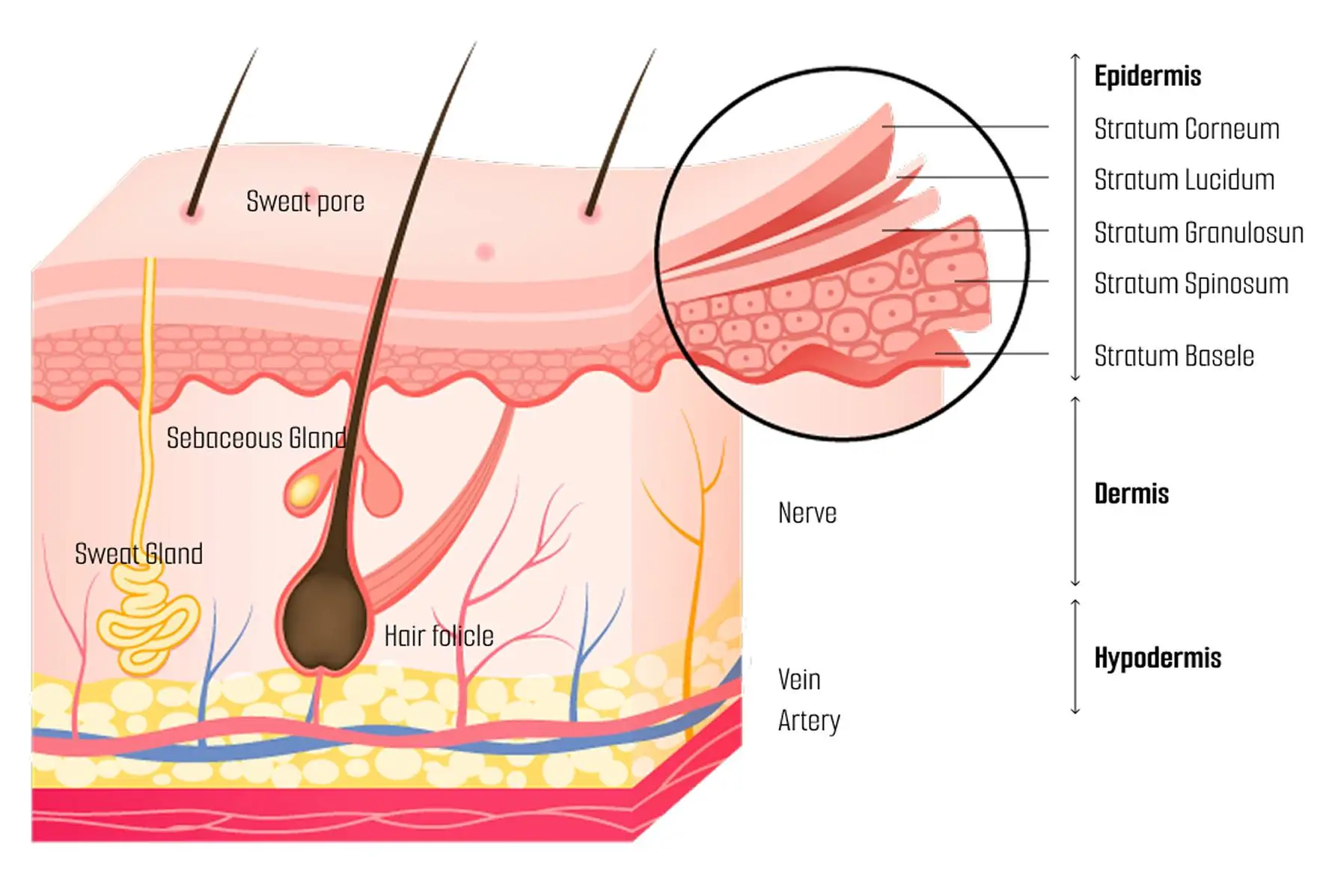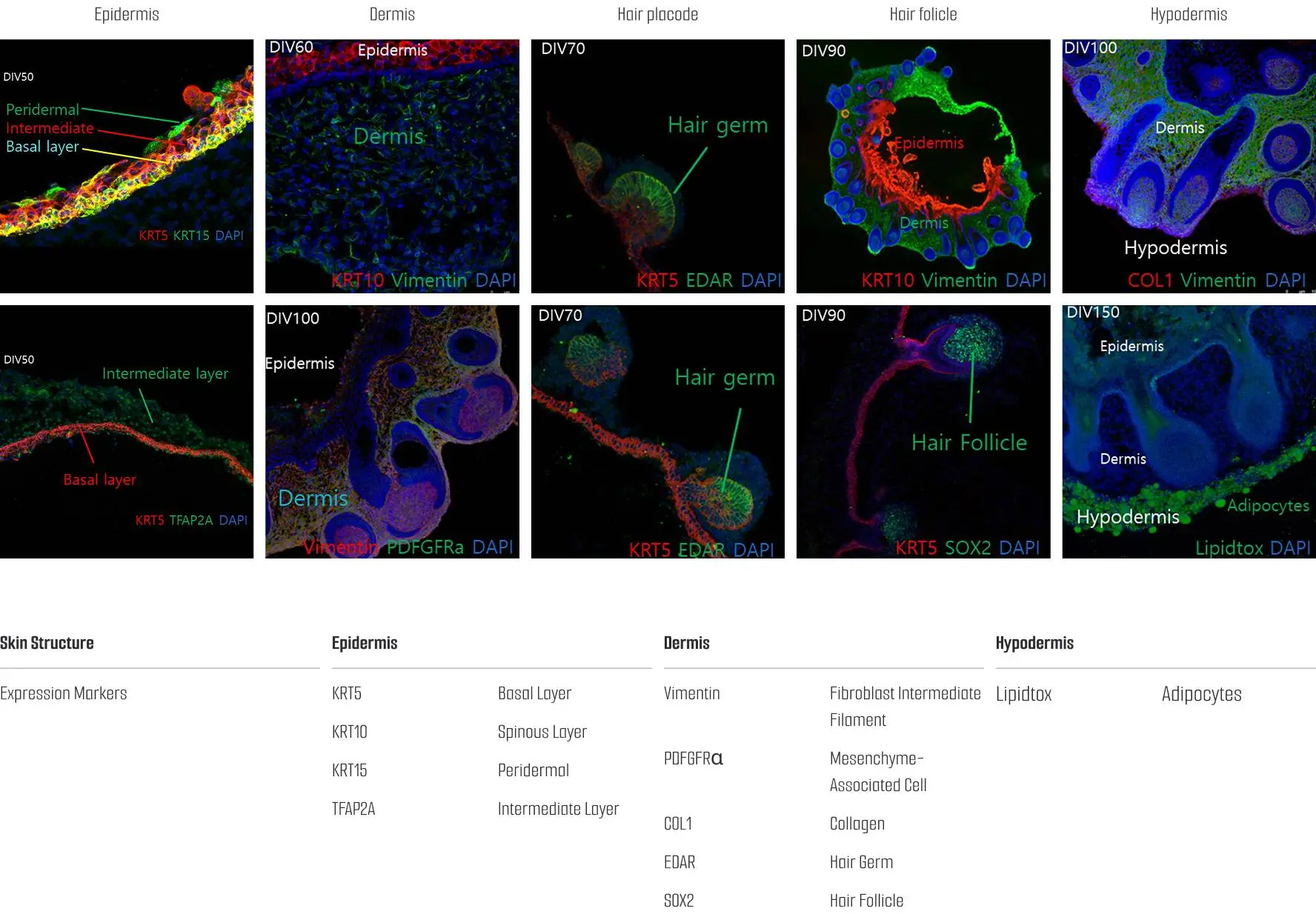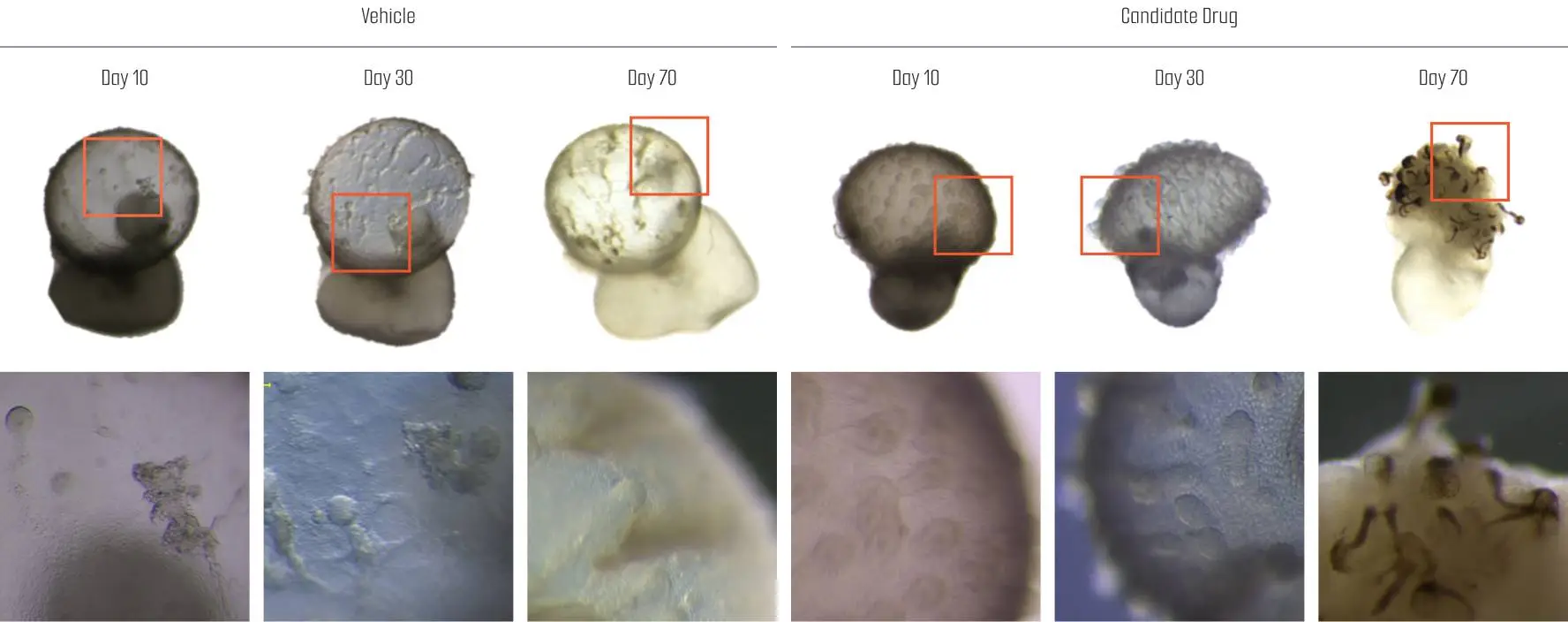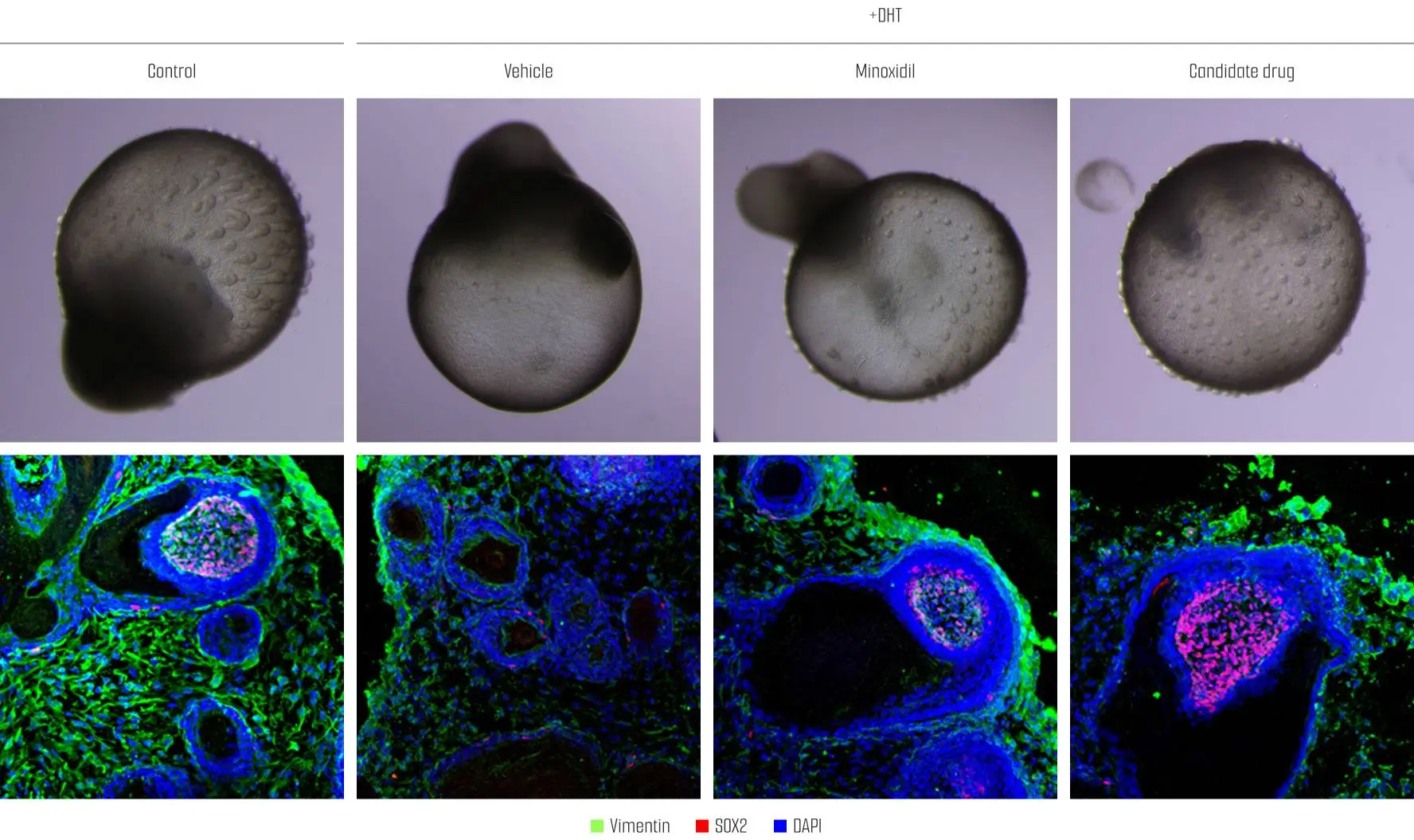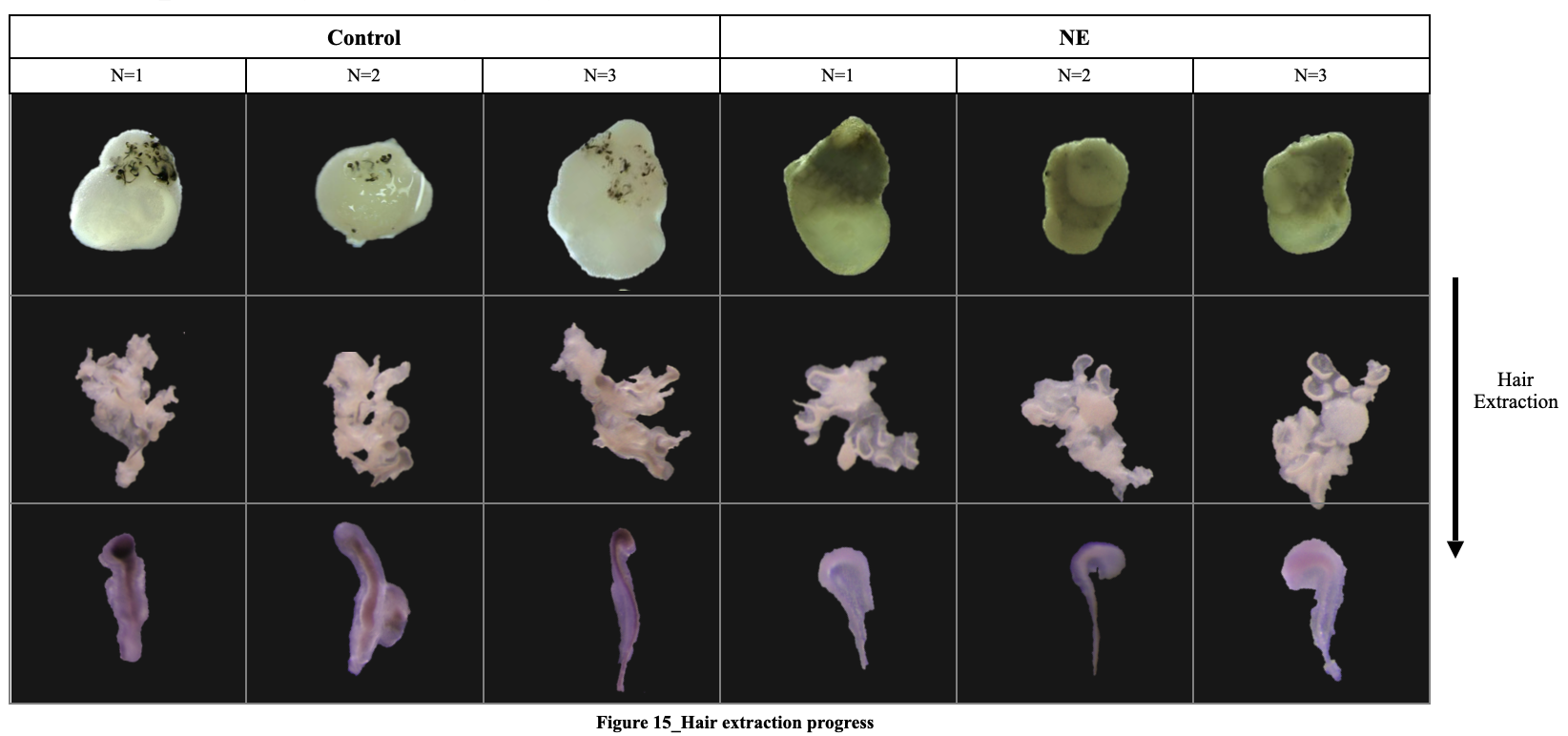We have developed hPSC-derived human skin organoids based on our differentiated technology to develop hair-bearing mature skin organoids.
Our skin organoids can be observed in a mature form with the epidermal layer, dermal layer, and subcutaneous tissue that appear in actual skin structure.
It is also composed of various cells such as fibroblasts, melanocytes, hair follicle-related cells, and adipocytes.
Our skin organoids can be observed in a structurally mature form and are capable of uniformly forming a higher number of hair follicles.
Compared to traditional artificial skin models and 2D cell lines, our skin organoids exhibit superior performance in replicating the complexity and functionality of human skin.
In order to discover drugs that help in the formation of hair, active substances were treated at the time when hair bulbs in skin organoids were formed, and drugs that increased hair follicle formation compared to the control group were selected.
When treated with an effective drug, an increase in the number of hair follicles was obtained, and additional research on mechanisms related to hair follicle formation was conducted.
